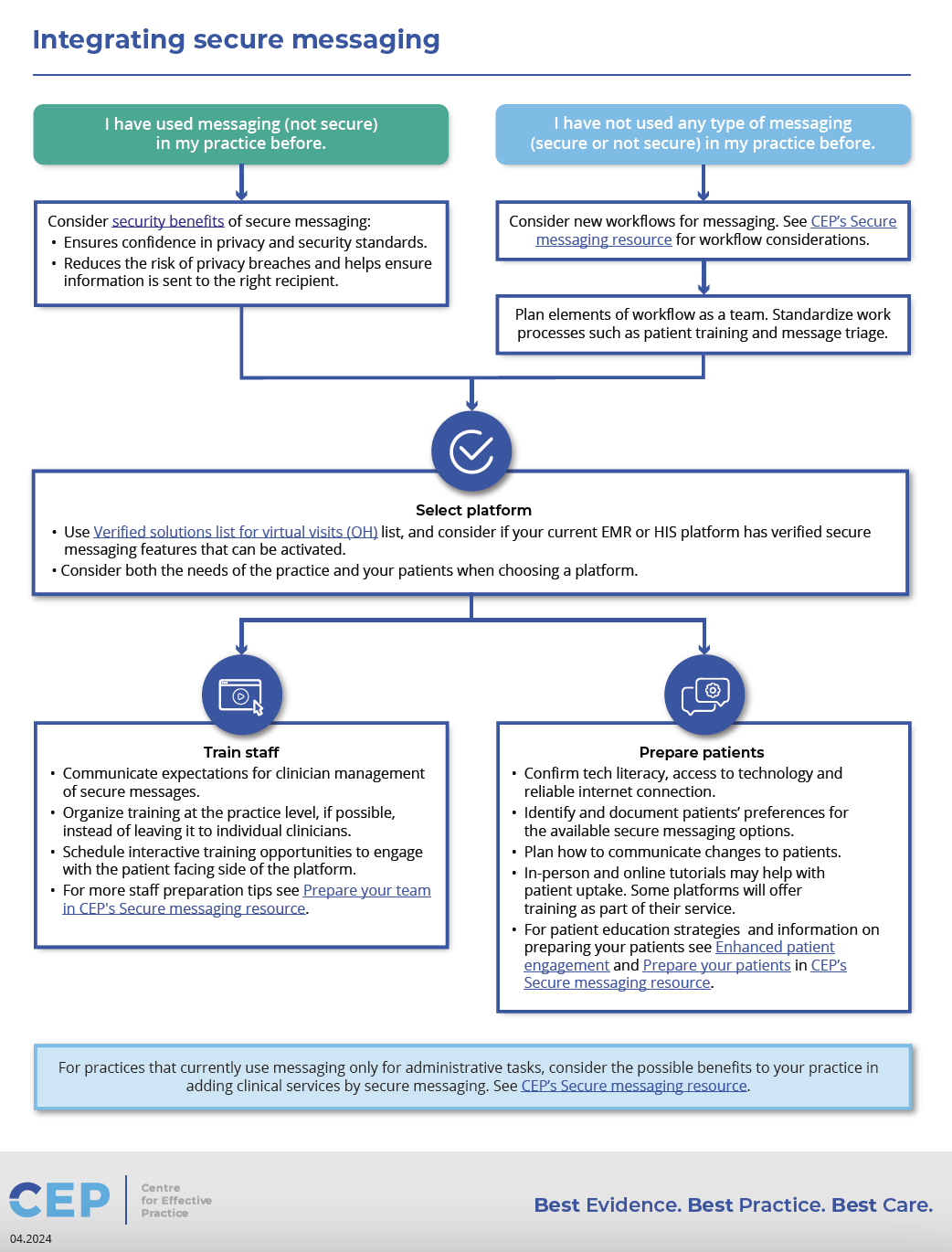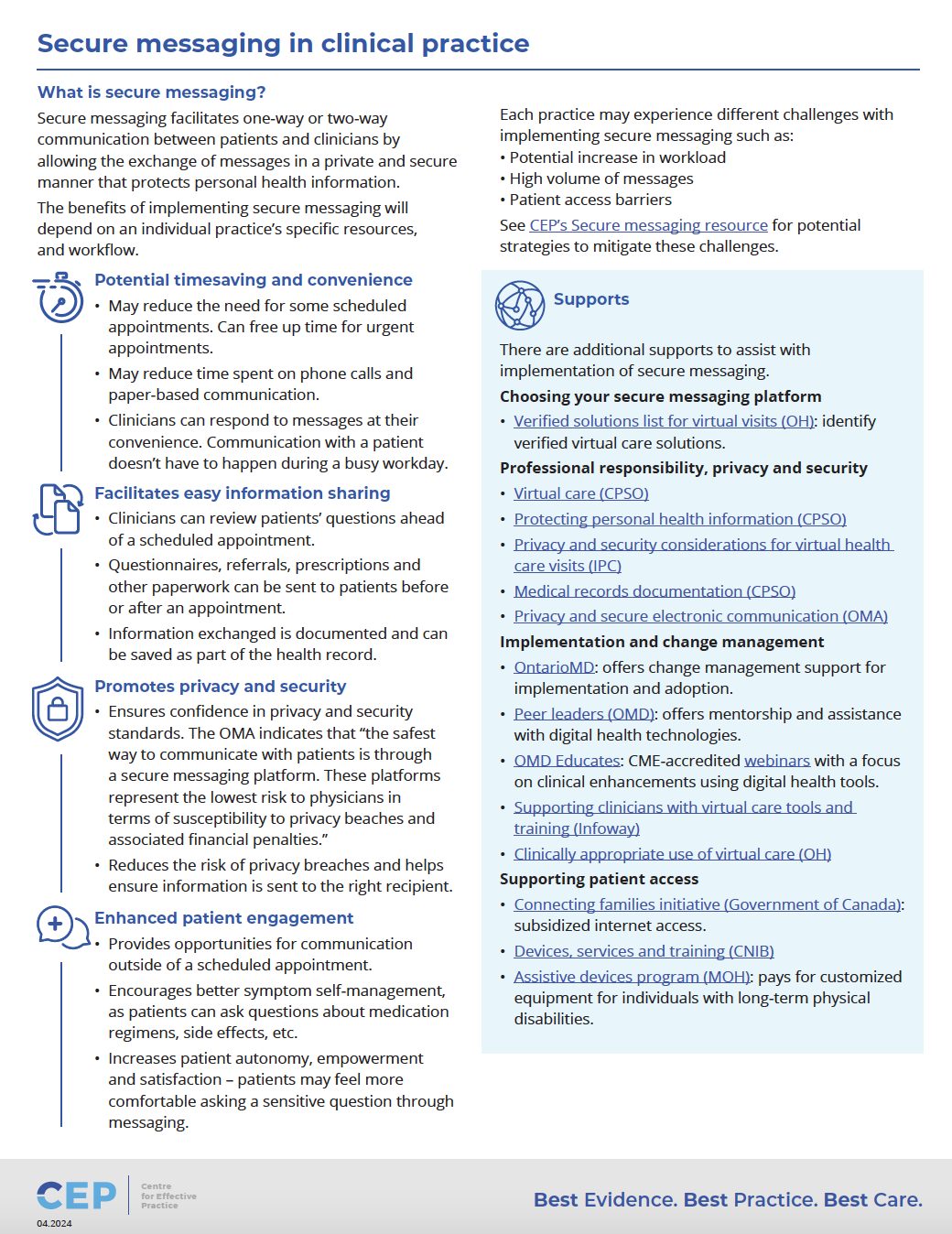The role of secure messaging in managing chronic conditions
- Opportunities for follow-up and monitoring in chronic conditions such as mental health, diabetes or hypertension.10,11
- Useful for reviewing routine information and follow-up for a patient receiving cancer maintenance therapy or surveillance.3,12
- It can help with patient navigation, and pretreatment and survivorship visits.3,12


